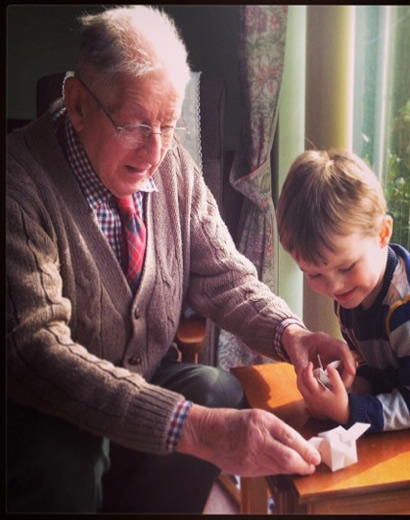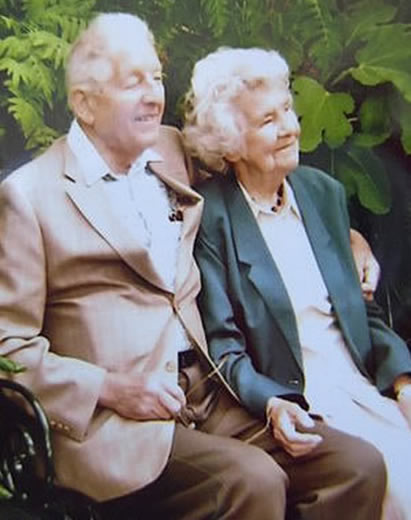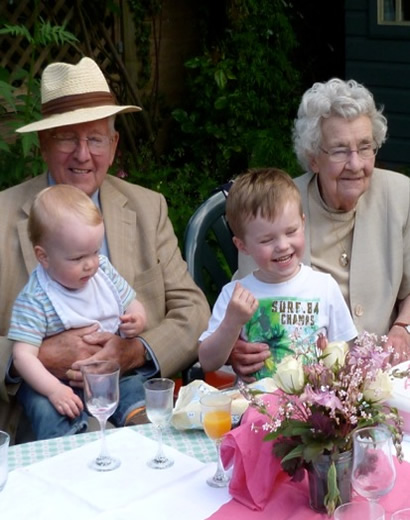The old London Ball Bearing Scooter of the 1930s
The great world depression that started in the 1920s carried on until towards the end of the thirties, when re-armament triggered a general upturn in trade and industry, When I was a boy in London at that time working class families had little money to spend on toys and even less if the breadwinner was out of work. This meant that children made the most out of materials that were readably available and one particular plaything that was really popular was the home made ball bearing scooter.
To make a scooter you first needed a couple of ball races. The ideal size was about three inches but they came in all sizes and you had to use what you could get , usually smaller A bit of wood was then whittled for each wheel and driven in to make axles..A second hand piece of wood formed the base, about four or five inches wide, twenty inches long and an inch thick, but size was decided by availability. A knotch was cut in the rear end and the axle of one wheel screwed underneath so that the wheel revolved in the knotch. At the front end you nailed or screwed a block of wood about five inches high, the width of the base and about three or four inches thick. In the front of this you fitted two heavy screw eyes about three inches apart, one above the other.
The upright front was a similar pice of wood with a knotch in the bottom for the front wheel, and a crosspiece at the top for a handle bar. Two more heavy screw eyes were then put into the front, matching the two in the block on the base.
You then brought the two units together with the front piece screw eyes resting on the base screw eyes and then threaded a large six inch nail or piece of steel through them to make a hinge. You were then ready to take to the road and it could be decorated or left rough as you pleased. I have only explained the basic design but there could be many innovations, but all depended on materials available and the tools and skill of the maker. If you had a Dad or older brother who knew what he was doing it helped a lot
The main advantage of the scooter was that it was cheap to make and this made it very popular with thousands ( and I mean thousands ) on the side streets of London.The steel wheels made them very noisy as they clattered over the joints in the paving stones and if you had a group of them, as you often did, they made quite a racket. Most of them were ramshackle and given to breaking down but it was accepted that this was part of the fun and were soon patched up and off again Compared with a modern scooter ,they did not compete but if you had a ball bearing scooter in those days it was unique to you and gave far more delight and satisfaction ,unlike today when a modern scooter is probably just another toy. .
Image from www.museumoflondon.org.uk
At that time most machinery, including cars used ball races that were designed to be replaced as they got worn so this meant that there were lots available as throw away items at engineering workshops that could be used where a bit of wear and noise was nothing to worry about as on a scooterTo make a scooter you first needed a couple of ball races. The ideal size was about three inches but they came in all sizes and you had to use what you could get , usually smaller A bit of wood was then whittled for each wheel and driven in to make axles..A second hand piece of wood formed the base, about four or five inches wide, twenty inches long and an inch thick, but size was decided by availability. A knotch was cut in the rear end and the axle of one wheel screwed underneath so that the wheel revolved in the knotch. At the front end you nailed or screwed a block of wood about five inches high, the width of the base and about three or four inches thick. In the front of this you fitted two heavy screw eyes about three inches apart, one above the other.
The upright front was a similar pice of wood with a knotch in the bottom for the front wheel, and a crosspiece at the top for a handle bar. Two more heavy screw eyes were then put into the front, matching the two in the block on the base.
You then brought the two units together with the front piece screw eyes resting on the base screw eyes and then threaded a large six inch nail or piece of steel through them to make a hinge. You were then ready to take to the road and it could be decorated or left rough as you pleased. I have only explained the basic design but there could be many innovations, but all depended on materials available and the tools and skill of the maker. If you had a Dad or older brother who knew what he was doing it helped a lot
The main advantage of the scooter was that it was cheap to make and this made it very popular with thousands ( and I mean thousands ) on the side streets of London.The steel wheels made them very noisy as they clattered over the joints in the paving stones and if you had a group of them, as you often did, they made quite a racket. Most of them were ramshackle and given to breaking down but it was accepted that this was part of the fun and were soon patched up and off again Compared with a modern scooter ,they did not compete but if you had a ball bearing scooter in those days it was unique to you and gave far more delight and satisfaction ,unlike today when a modern scooter is probably just another toy. .





